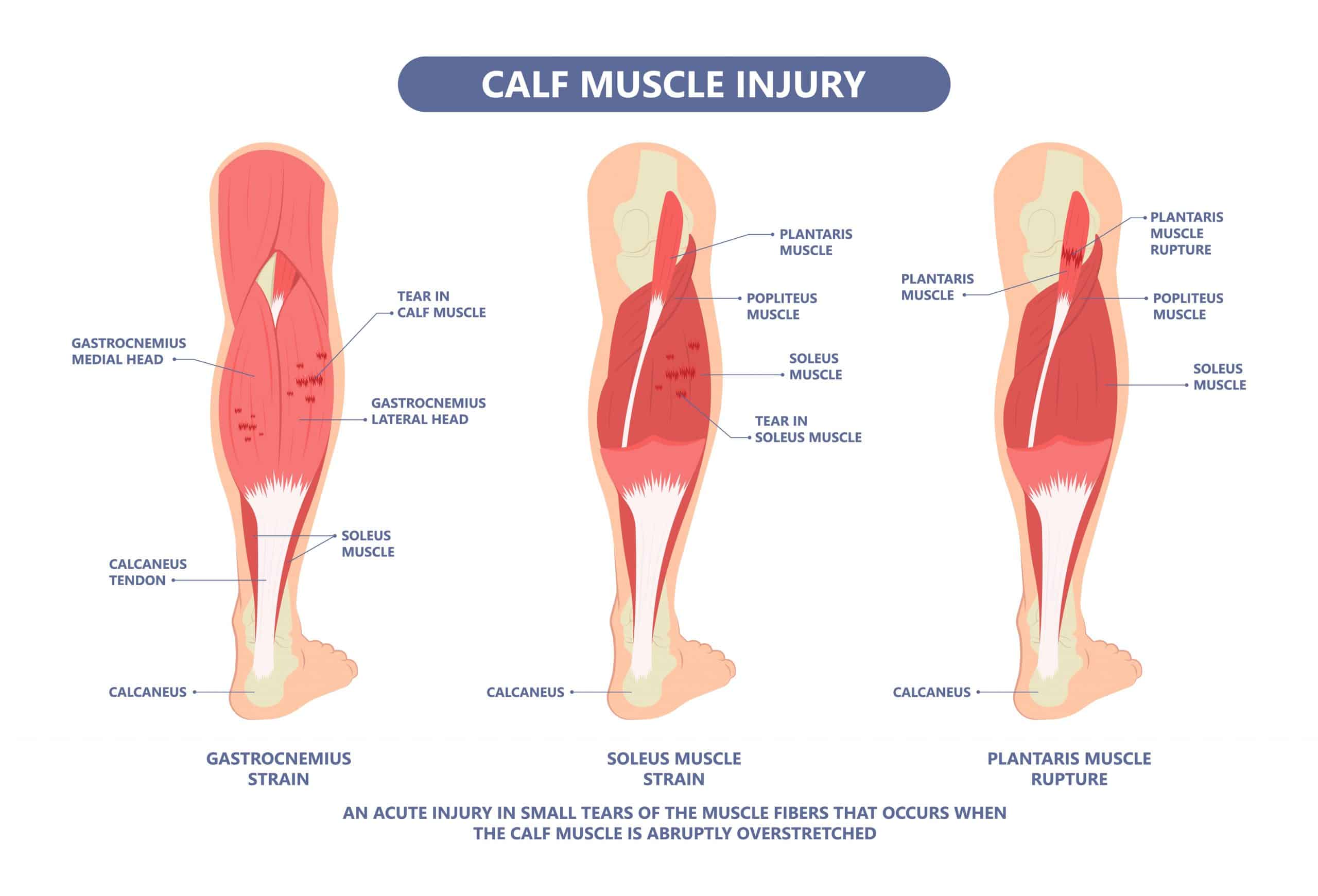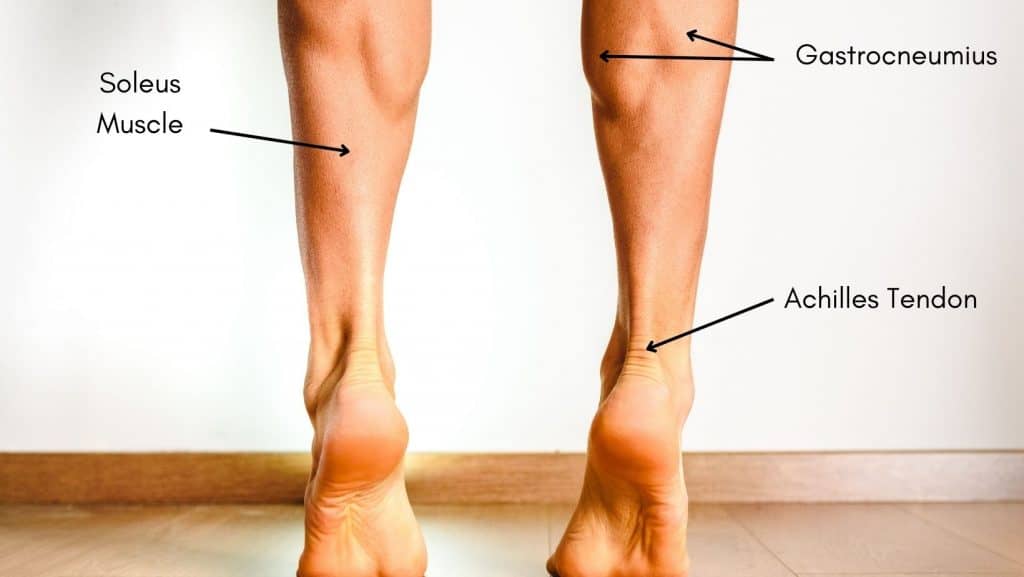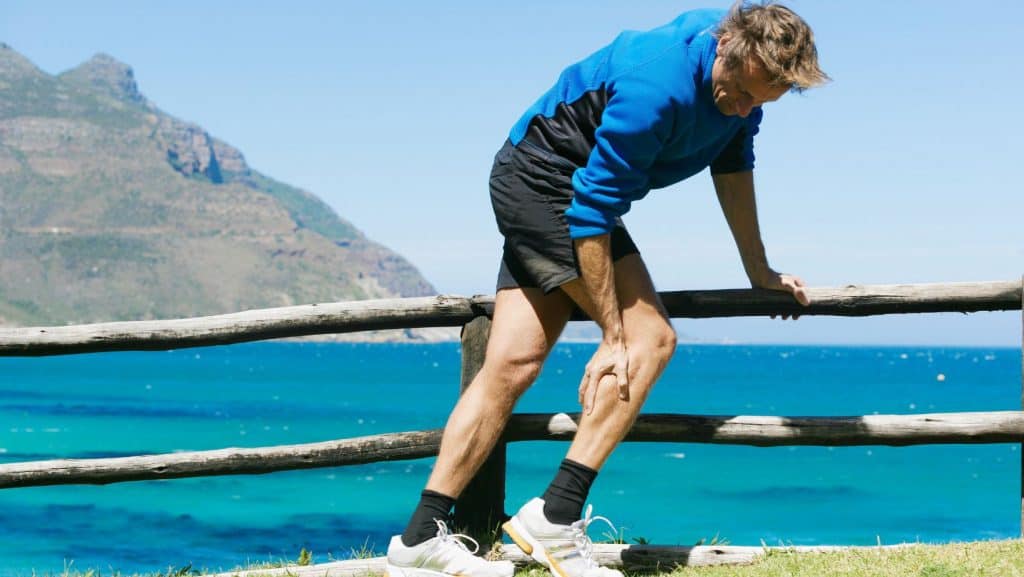Calf Muscle Pain
Read More >
The calf muscles work to lift the heel off the floor and propel you forward when walking and running. The calf complex consists of two muscles; the Gastrocnemius and the Soleus which are attached to the Achilles tendon and the heel bone at one end.
The deeper soleus muscle attaches below the knee, and the more superficial gastrocnemius is attached above the knee. Therefore, the gastrocnemius will work more when the knee is straight and the soleus when the knee is bent. In this article, we will explore what causes calf pain running.

The most common cause of calf pain is when the calf muscles are overloaded, and the demand exceeds the muscle’s capacity.
When running, the calf muscles may not be strong enough for the intensity or duration of the run, resulting in the calf muscle feeling progressively more tight and painful. As this progresses, this can trigger a cramp, a strain or a tear.
Injuries can occur in the main belly of the muscle, in the junction between the muscles and the tendon, or in the tendon itself. As well as feeling where the pain is, common patterns are seen when a muscle or tendon is injured, which we will explore further in this article.
Tendon injuries are often painful first thing in the morning or after impact activity. They often feel better after warming up the tendon or during an activity. Impact activity, such as running, can result in delayed pain, which you might feel when walking after sitting still or in the morning after exercise.
Muscles tend to be more consistently painful when the muscle is used and worsens the longer it is used and the greater the work intensity. It will then gradually get better with rest.
Differentiating between the two calf muscles can be difficult. Still, pain specific to the soleus is usually more pronounced when a heel raise is done with a bent knee and the gastrocnemius when the knee is straight. The soleus can also give a more vague pain as it is a deeper-lying muscle, and often, the individual might find it hard to pinpoint the area of pain.
Tendon pain is almost exclusive to the tendon. This may be along the length of the tendon for injuries such as tenosynovitis or one specific point on the tendon of an Achilles Tendinopathy.

Determining the extent of an injury is essential to allow the most appropriate rehabilitation for recovery. The history of the onset of the pain, sudden or gradual, the intensity of the pain, and how the muscle can function are all helpful indicators to diagnose the severity of the injury. Swelling and especially bruising can take several days to appear after the injury.
Based on the British Athletics muscle injury classification, muscle and tendon injuries are graded 0-4. 0 is a strain, and 4 is a rupture or complete separation of the two ends of the muscle or tendon.
A letter is now attached to the grading, which will indicate the location of the injury with (A) referring to an extension from the fascia, (B) muscle or muscle tendon junction and (C) tendon involvement.
Muscle strain, soreness after exercise, no sign on MRI.
Small muscle tears, & <10% cross-sectional area, pain but no loss of strength, haematoma
seen on MRI.
2 = Moderate muscle tears, 10-50% cross-sectional area, pain with loss of strength, high
signal changes on MRI.
Extensive muscle tears, >50% cross-sectional area, pain with loss of strength and
function, high signal changes on MRI.
Complete muscle tears, 100% cross-sectional area, noticeable gap, defect seen on MRI.

Your calves might hurt when running as you may have an injury such as a strain or tear. However, many other reasons you might experience pain when running are less common.
Compartment syndrome is a condition where fluid can build up under a band of tissue. The skin will usually look pale, and the individual can feel pins and needles or numbness on the skin as well as pain. Often the muscle will be affected and may not feel as strong, or it might not be able to function at all.
A DVT is usually felt as extreme tightness and pain in the calf that worsens as the intensity and duration of the activity increases. This is most common when an individual has been inactive for an extended period, such as a long-haul flight or following surgery. There is usually a change in colour of the calf, making it look red or dark on the skin, and it will be swollen.
Other causes include issues with blood clotting, smoking, being overweight, severe dehydration, varicose veins, cancer or heart failure.
It does not help recovery from a calf injury if the demand for the recovering tissue is too high. Therefore, the severity of the injury will guide what is best to be done in terms of activity.
In a less severe injury in a strong individual, it may be okay to have calf pain running slowly on flat, level ground but not to run fast or uphill. Less-conditioned calf muscles with a more severe injury may be better off not running.
Sometimes, it is best to rest the muscle completely, and a Physical Therapist might advise you to use crutches for some time.
A good rule is not to run if you don’t know what is hurt or why. Without knowing this, you won’t know if you are doing more harm or not. It is best to see your physiotherapist, doctor or physician to assess this and ensure you follow the best treatment to recover.

This is not medical advice. We recommend a consultation with a medical professional such as James McCormack. He offers Online Physiotherapy Appointments weekly.